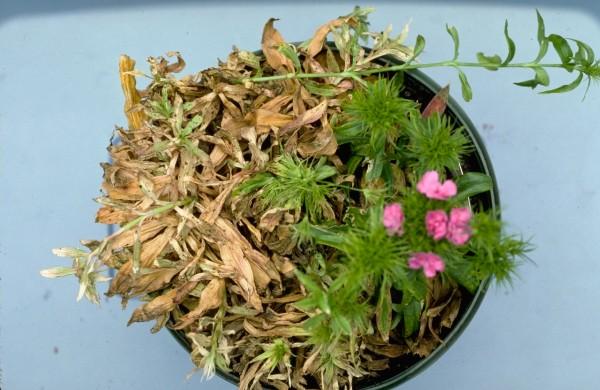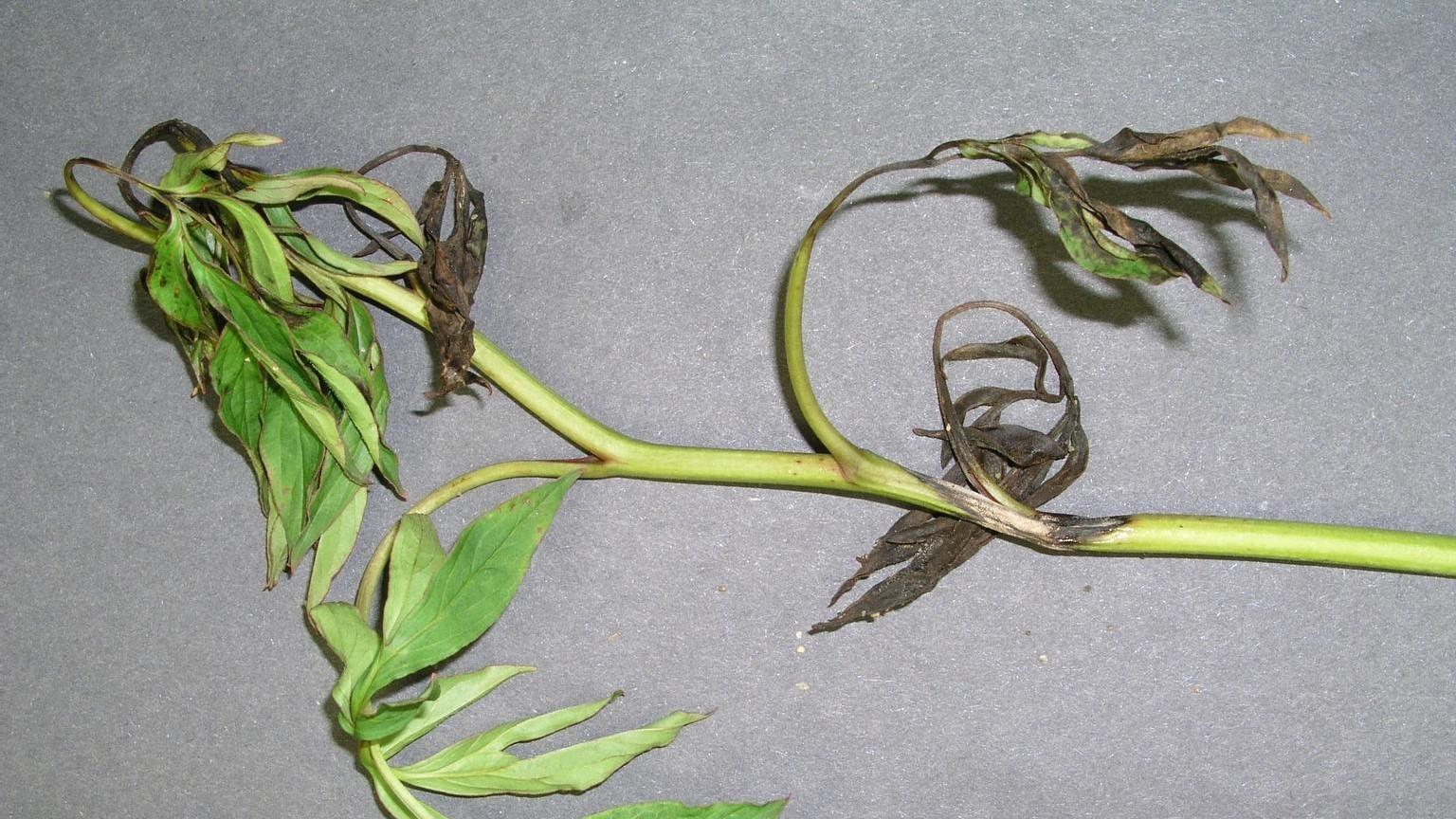Anthracnose symptoms typically appear as dark-colored spots, leaf yellowing, or sunken lesions that can quickly run together to form irregular dark lesions that cause rapid blighting of leaves or stems. This blighting can result in severe plant losses if not diagnosed in the early stages of infection. Under wet conditions, these diseases can have multiple infection cycles during the growing season. Anthracnose diseases are caused by various fungi that produce their spores within a fungal fruiting body called an acervulus. The acervuli are often visible as small dark dots within the necrotic leaf or stem lesions and the spores are often released in slimy mass.

Perennials commonly infected by anthracnose diseases include Acorus, Belamcanda, Bergenia, Calamagrostis, Convallaria, Dianthus, Epimedium, Heuchera, Hosta, Liatris, Liriope, Luzula, Malva, Panicum, Pennisetum, Phlox, Polygonatum, Rudbeckia, Saponaria, Sedum, and Tiarella.
Management
If possible water early in the day, allowing leaves to dry before evening. Keeping plant foliage dry overnight helps to prevent fungal diseases because infection occurs when leaves are wet for prolonged periods of time. Pick and discard infected leaves and stems, if practical. Cut infected plant to ground level in the fall and discard in the trash instead of composting. Thorough fall clean-up will help to reduce the amount of infection during the next growing season.
